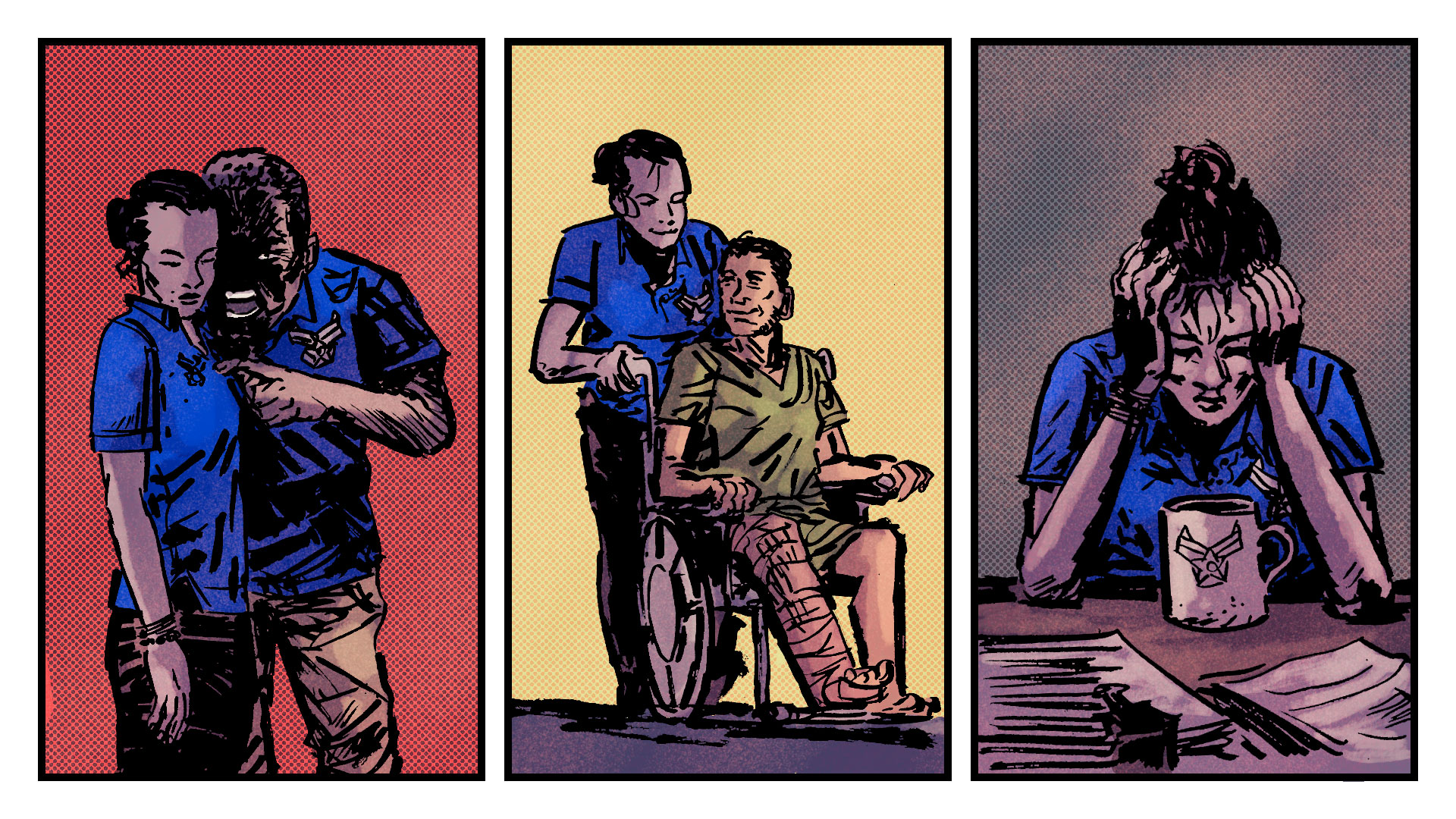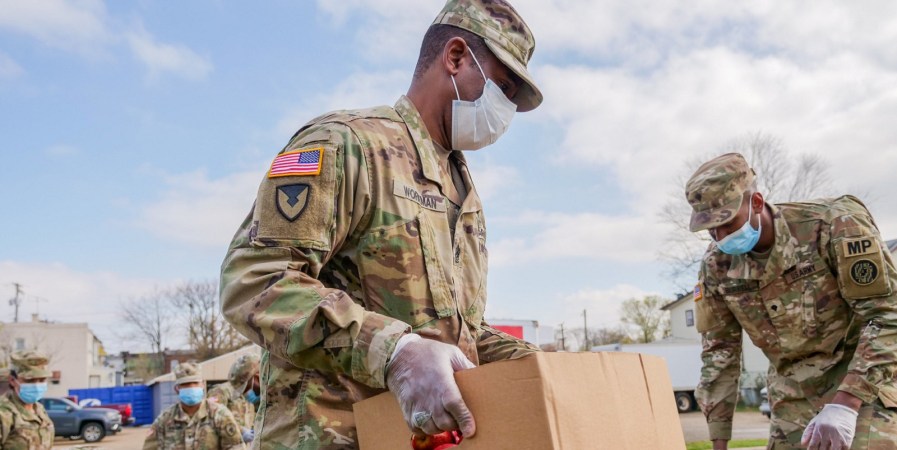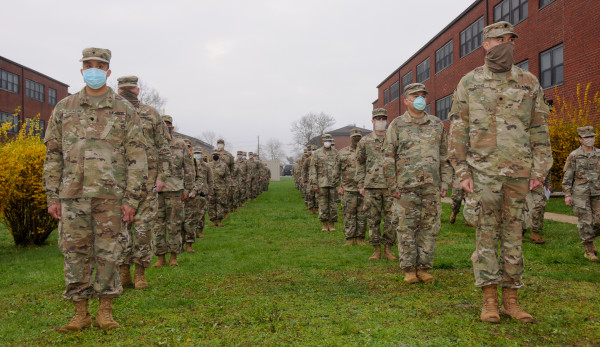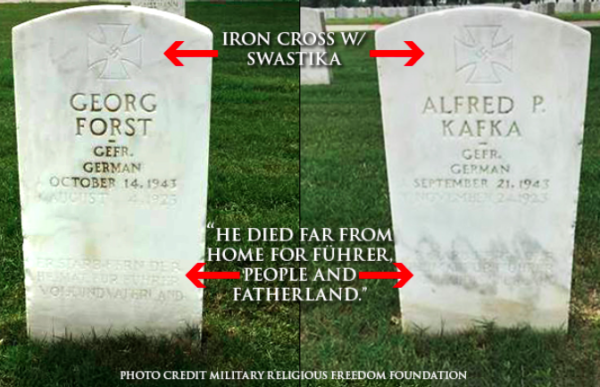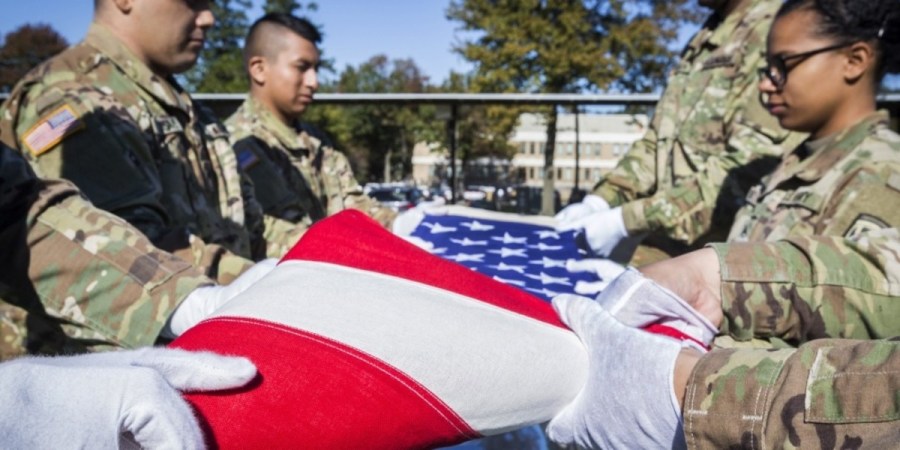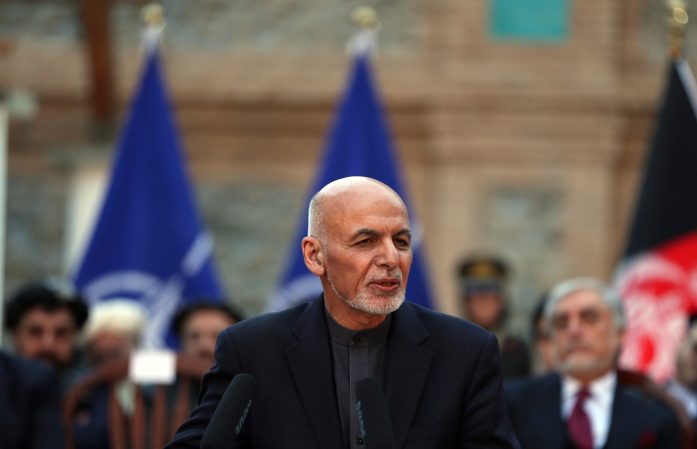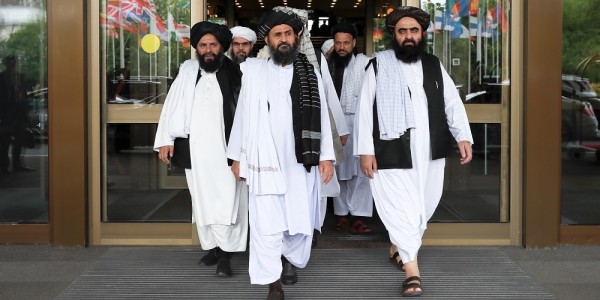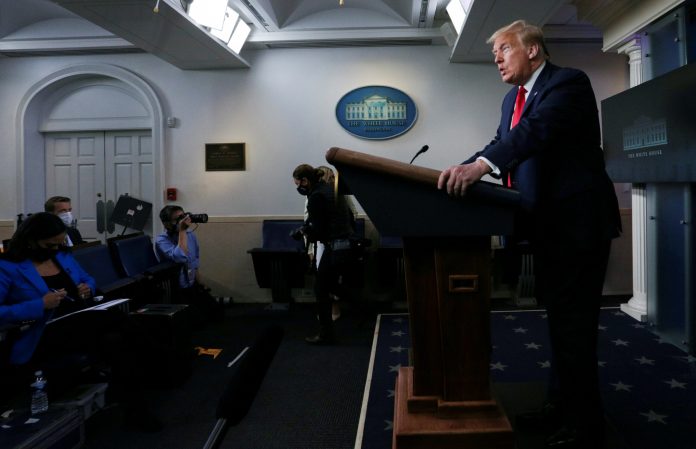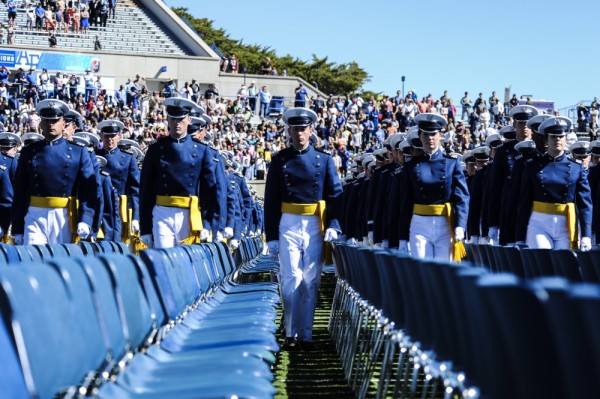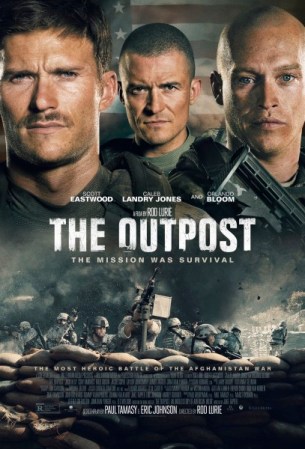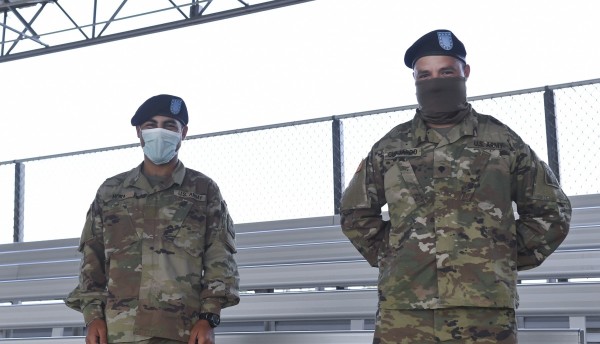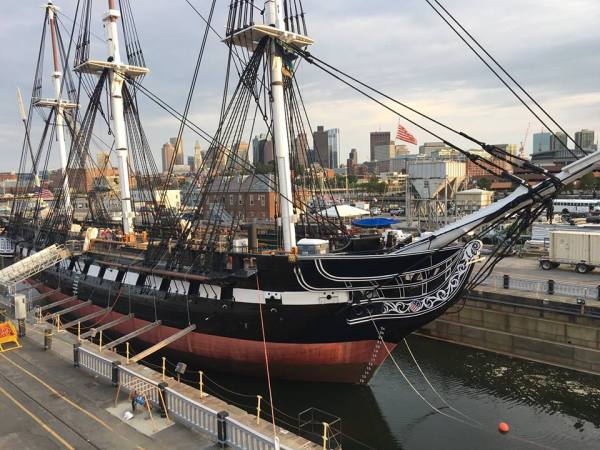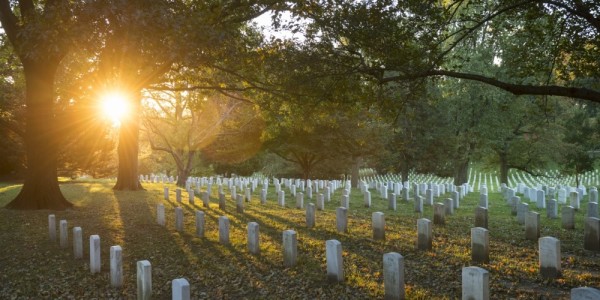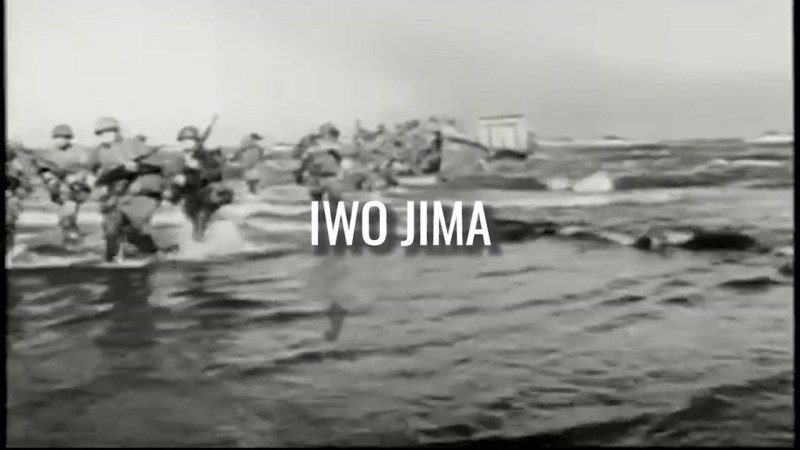Anna Cook was already having second thoughts about working as a contractor at the Air Force Wounded Warrior Program when, in 2016, a coworker she was having a dispute with threatened to hurt her children, she alleged. The coworker, Moses Espinosa, has also threatened other contractors and staff, according to other contractors and staff who worked at the program.
“I was extremely angry and frightened at the threat Moses made toward my kids,” Anna wrote in a 19-page statement filed alongside a 2017 complaint, which alleged that her employer, the Armed Forces Service Corporation (now called Magellan Federal), had discriminated against her based on sex.
Anna said her encounter with Espinosa, and her time at the Air Force Wounded Warrior Program (AFW2) in general, left her scared, anxious, depressed and suicidal. (Anna Cook is a pseudonym; while Task & Purpose has verified her former employment with Magellan, her real name is being withheld for this article to protect her family from possible retaliation.)
“I became severely depressed and gained a lot of weight, had horrible migraines and missed a lot of days’ work due to all that was happening,” Anna said in her complaint. “At no point should a coworker threaten the lives of another’s child.”
The U.S. Equal Employment Opportunity Commission was unable to conclude that Anna’s story “establishes violations of the statutes,” the EEOC said when it closed the file in July 2017, though whether that means the EEOC disputed the story or whether it did not rise to the level of a violation is unclear.
“We do not tolerate harassment or any other offensive behavior,” wrote Lilly Ackley, vice president for corporate communications at Magellan Health, which owns Magellan Federal. “Magellan Federal promptly investigates allegations and takes appropriate disciplinary action, up to and including termination, when it determines that an issue that violates company policy has occurred.”
Still, Anna’s story tracks with those of several other contractors, staff and wounded warriors. Many sources who spoke with Task & Purpose were drawn by AFW2’s mission to help wounded, ill and injured airmen recover or transition out of the service. But when they started working there, they felt bullied, threatened, and ostracized by various employees, managers and contractors.
The Air Force Wounded Warrior Program is a federally-funded Air Force program headquartered at Joint Base San Antonio, Texas. Its mission to help injured airmen is hampered by what numerous people say is a deeply toxic workplace. Anna was among two dozen sources who told Task & Purpose over several months that top leaders at AFW2 have created a climate of retaliation and favoritism that drives away employees and contractors and alienates wounded warriors.
“People said if it wasn’t for this program — and two warriors stated if it wasn’t for me, specifically — they would have committed suicide,” said Anna, herself a 20-year Air Force veteran hired to work as an events coordinator for AFW2. “But a lot of the leadership and employees do shady stuff behind the scenes that make the program look bad and made for a toxic work environment, which forced me to leave.”

The chief of AFW2, Col. Richard Obert, and the head of the Air Force Personnel Center, Maj. Gen. Christopher Craige, declined to speak with Task & Purpose, and the Air Force Personnel Center declined to comment on specific allegations, citing privacy concerns. However, Michael Dickerson, a spokesman for AFPC, said program leadership was aware of issues at AFW2.
“The AFPC commander is aware of previous allegations and concerns about AFW2,” Dickerson told Task & Purpose. “It has his attention and he maintains routine updates on the program to help ensure a healthy and effective organization.”
Dickerson said AFW2 was strengthening its feedback and survey system, analyzing the number of staff required to support programs, continuing its budget and expenditure reviews and financial audits and establishing measures of effectiveness to help inform program implementation and decision making.
“We’re not perfect, but we take our responsibility seriously and regular feedback helps us identify areas in which we can get better,” Dickerson said.
But for the two dozen former employees, contractors and wounded warriors who spoke with Task & Purpose for this story, the damage is already done. Like Anna, most spoke with Task & Purpose on the condition of anonymity out of fear of retaliation from program leadership.
Specifically, sources accused AFW2 program leadership of the following:
- Tolerating threats made against coworkers, such as Espinosa’s threats against contractors and staff. Espinosa declined to comment, and Anna said he delivered his threats verbally, so there is no written evidence of the threat occurring. However, sources say that Espinosa has threatened or intimidated at least two other contractors and one former staff member.
- Fostering a climate of favoritism where program leadership vacationed with certain staff members and contractors and held them to lower standards of professionalism and lower workload expectations than the rest of the staff and contractors, sources said. The Air Force Personnel Center substantiated a complaint against one staff leader taking other AFW2 staff members on vacations, though other complaints had not been substantiated, based on the records provided to Task & Purpose.
- Retaliating against staff and contractors who disagreed with leadership, either by ostracizing them at the AFW2 workplace, giving them unclear instructions on their responsibilities, accusing them of having bad attitudes, or canceling their contracts without warning or explanation. Five sources said they were retaliated against personally and two more said they had to constantly walk on eggshells to avoid saying something that might prompt retaliation.
- Fostering what four sources described as a sexist environment where favored male employees and contractors could get away with unprofessional behavior and sexually harassing female coworkers.
- Making AFW2 staff babysit the young child of the then-commander of the program during official AFW2 events. That claim was substantiated by a command-directed investigation, Air Force Personnel Center officials told Task & Purpose.
- Valuing success at the Department of Defense Warrior Games over personal development of AFW2 athletes. Sources said that conflicted with the goal of the program, which was to primarily be a place for healing wounded warriors. “I don’t think they managed the athletes’ expectations, because there’s so much pressure to make the warrior team,” one former wounded warrior said. “But that’s not what it’s about, It’s about getting your ass off the couch so you can live. That’s the endgame.”
Meet the ‘Mean Girls’
The Air Force Wounded Warrior Program was launched in 2007, partly in response to airmen who had been grievously injured in the Global War on Terror, though airmen with non-combat-related medical conditions also participate.
“When I got hurt in 2005 there was no AFW2,” said Israel Del Toro Jr., a former Joint Terminal Attack Controller who suffered severe burns across more than 80 percent of his body when his Humvee hit a roadside bomb in Afghanistan in 2005.
“I had great support, but the Air Force never had anyone like me,” explained Del Toro, a well-known figure in the wounded warrior community. “Most people were slightly injured and could come back to duty, or they passed away. I was the first to survive where I should have died.”

The program helps injured airmen like Del Toro navigate the complicated bureaucracy of medical treatment as well as the medical evaluation board process, by which the military determines whether a service member must be medically discharged and determines their eligibility for disability compensation.
AFW2 is not the same as the Wounded Warrior Project, though the two have a similar mission. WWP is a civilian non-profit that organizes various events, therapy programs and career tracks for wounded veterans. AFW2 is a government program run by the Air Force and is thus a completely separate entity from WWP. AFW2 provides similar events, therapy programs and career help, but it also provides guidance through the military bureaucracy as wounded airmen navigate the healing process and potentially transition out of the service.
Most airmen never have to use AFW2’s services, but the program has been a lifesaver for many of the 12,000 airmen who have. Several sources said AFW2 saved them from financial ruin by helping them access the right benefits. They said it also helped them navigate the spiritual turmoil of transitioning to life with disabilities, and civilian life in general, by introducing them to adaptive sports, therapeutic programs, and other airmen going through similar challenges. It was this spirit of aid and comradeship that attracted Anna and many others to work for AFW2.
But sources said that beneath the altruistic exterior, the work environment at AFW2 resembles a real-life version of the 2004 film “Mean Girls,” which portrays a clique of popular high school girls who make life hell for anyone they don’t like. Except at AFW2, the popular clique runs a taxpayer-funded program, with a budget of nearly $12 million in 2020, charged with caring for some of the most vulnerable people in the Air Force.
In particular, sources held Marsha Gonzales, the chief of the Warrior Care Support Branch and the top civilian employee at AFW2, responsible for creating and enforcing that culture.
“If you’ve seen the movie ‘Mean Girls,’ that’s Marsha,” said one former contractor, who once served as a chief master sergeant, the highest enlisted rank in the Air Force, in a logistics readiness squadron. “I really loved my job [at AFW2]. I did it while I was hospitalized. But for that woman, it’s all about the fame and glory, what it can do for her.”

Several sources said Gonzales ostracized staff and contractors who disagreed with her, protected abusive staff members and gave special treatment to favored staff members by inviting them on vacations with her. These kinds of actions are forbidden by Air Force regulations because they “result in, or reasonably create the appearance of favoritism, misuse of office or position, and adversely affect the efficiency of the service.”
“I noticed cliquey behavior in terms of the staff, or which wounded warriors were selected for and praised at events,” said a former employee who went by the pseudonym Jessie to avoid retaliation for speaking to the media. “It felt like I was always trying to understand Marsha: her motives, how she influenced the environment.”
In the military, relationships between service members, and particularly between officers and enlisted members, are heavily regulated in order to maintain good order and discipline and dispel the appearance of favoritism. Those regulations apply to civilian employees as well.
Sources said what made Gonzales’ leadership style especially difficult was the fact that it was impossible to raise concerns to her or other program leaders without facing retaliation. They said they were bullied, fired or cold-shouldered whenever they pressed difficult questions about the program.
“They couldn’t pay me enough money to go back in there,” said one former contractor, a Navy veteran who served for more than 20 years. “Not unless they change the leadership.”
The AFPC public affairs office declined to answer specific, detailed questions from Task & Purpose about Gonzales’ alleged unprofessional relationships, citing privacy concerns. Gonzales declined to comment.
Nearly all of the former contractors who spoke with Task & Purpose, most of them military veterans, said they were eager to help service members at AFW2. But they quickly became disillusioned when they went behind the curtain.
‘I felt at home, back with the Air Force’
Anna first heard of AFW2 while she was in the process of retiring from the Air Force and moving to San Antonio, Texas in 2015. A former Air Force medic, Anna’s favorite part of her job was helping sick or injured people and getting a smile back on their faces. The veteran thought helping injured airmen with AFW2 would be a great way to give back to her service. A year later, she landed a position coordinating events where participating companies teach veterans how to interview for a job and other career development skills. Though she ended up teaching the boot camps herself, she enjoyed helping the warriors in her charge.
“I felt at home back with the Air Force, helping people who were injured,” Anna said.
Subscribe to Task & Purpose Today. Get the latest in military news, entertainment, and gear in your inbox daily.
But Anna said the program does not practice the values it preaches. She said she began to notice this at her first CARE [Caregiver Support, Adaptive Sports and Ambassador Workshop, Recovering Airman Mentorship Program and Resiliency Programming, and Empowerment in Transition] event, which brings wounded warriors together to learn about resources to help them. These multi-day events are helpful for airmen, but they are also exhausting for the staff and contractors, many of whom have their own wounds to cope with since the program also employs injured veterans. Anna herself still deals with the memories of deploying as a medic to Afghanistan, where she “dealt with things that will never leave your head,” she said.
“It’s physically and emotionally draining,” Anna said, about the CARE event. “It not only tugs at your heartstrings, but it reminds you of the stuff you’re going through.”
Working 12 to 17 hour days for 20 days in a row, Anna found that AFW2 staff and contractors became extremely close over the course of a CARE event. Anna said that at her first CARE event in West Point, N.Y., she developed a “work husband”-type of relationship with Espinosa, who managed supplies and equipment for the events.
“We made sure one another had food, water and grabbed meals together, sometimes flirted and hung out after hours as well,” she said.
But their friendly relationship made Gonzales jealous, Anna wrote in her complaint. She said she noticed Gonzales and her deputy, Tony Jasso, watching Anna more closely, whispering and glaring at her at the West Point event, and excluding her from after-hours team events. Tony Jasso is AFW2’s lead for outreach, marketing, communication and adaptive sports.
“It seemed odd for a new employee such as myself to be immediately an outcast of the office,” Anna said in her complaint.

Over the next few months, Anna said Espinosa gave her the cold shoulder and made rude jokes to her. Espinosa was “playing his cards right” in order to stay in Gonzales and Jasso’s good graces, Anna recalled him saying. But one day, Anna had had enough, and she pushed back, pointing out how many women Espinosa flirts with, including herself, despite him being married with children.
“If your wife only knew how you flirted with women while on these trips,” Anna recalled telling him.
That seemed to strike a nerve with Espinosa, who then threatened to call members of the Mexican Mafia, a prison gang prominent in California and other states, to rape and murder Anna’s children in front of her, Anna wrote in her complaint. “And I’m not fucking kidding,” Espinosa said to Anna, according to her EEOC complaint. Anna could not provide written evidence of the threat to Task & Purpose.
Espinosa declined to comment for this article, and the AFPC public affairs office declined to comment on the cases of specific individuals, citing privacy concerns. At the time, Anna worried that if she filed a formal complaint against Espinosa, it would escalate the situation and he would actually make good on his threat.
Anna said she put extra locks on the door of her house and sent her children to live with her ex-husband for a while to try to keep her kids safe from Espinosa’s threats. She eventually raised the issue to her managers and human resources department at Magellan Federal, the company that employed many of AFW2’s contractors at the time. But when they did not take action against Espinosa, Anna sought help from Thomas Crane, a contract and discrimination attorney in San Antonio. Together they filed an EEOC complaint against the company.
“Life in the office was becoming unbearable for me,” she wrote in her EEOC complaint. “I started noticing my work being sabotaged, i.e. shared excel documents being changed or deleted.”
Anna said she developed migraines, anxiety, depression and even had thoughts of suicide because she felt she was putting her children in danger. But the EEOC complaint led nowhere. In its right-to-sue notice, which the EEOC sends to complainants after it closes an investigation, the office wrote that “Based upon its investigation, the EEOC is unable to conclude that the information obtained established violations of the statutes.
“This does not certify that the respondent [Magellan Federal] is in compliance with the statutes,” EEOC added. “No finding is made as to any other issues that might be construed as having been raised by this charge.”
For Crane, the finding was not unexpected. The lawyer told Task & Purpose that most EEOC complaints bear little fruit.
“Former military members often think the EEOC will do something,” said Crane, himself an Army veteran. But in the vast majority of cases action is not taken, he said.

EEOC workers have been overworked and underpaid since the 1980s, Crane explained, and while the number of filings has increased over the past 20 years, the number of workers remains the same.
“It really takes the wind out of [veterans’] sails” when their complaint doesn’t gain much traction, he said.
A senior advisor to three former EEOC chairs, Cathy Ventrell-Monsees said the commission suffers from “not enough budget. Not enough staff. An overwhelming number of charges,” she told Fast Company in August.
When the EEOC complaint went nowhere, Anna asked Crane about suing Magellan for creating a hostile work environment, harassment and gender discrimination. The lawyer explained that it would have been difficult to prove her case in court, and shortly after the consultation Anna decided to quit her job, making the chances of a successful suit near-zero.
“If you quit, it’s harder to show an adverse personnel action” such as being demoted or fired, Crane explained. “If you can’t show an adverse personnel action, then you can feasibly demonstrate discrimination, but there are no damages connected. What do you get if you win? You really get nothing, so it’s not a lawsuit that’s worth pursuing.”
“Oh, that’s still going on?”
The problems at AFW2 continued after Anna left the program. Espinosa was promoted from a contractor to an AFW2 employee position. He later struck up a close relationship, which many sources described as an affair, with an AFW2 contractor and continued bullying other contractors and staff, several sources said. No matter the nature of his relationship with the contractor, sources said it disrupted their work, which, if true, means it violated AFW2 policy. Air Force officials told Task & Purpose that personal relationships “become matters of official concern when they adversely affect or have the reasonable potential to adversely affect the Air Force by eroding morale, good order, discipline, respect for authority, unit cohesion, or mission accomplishment.”
Several sources said Espinosa’s relationship with the contractor hurt morale and created conflict among staff members because Espinosa, who worked in AFW2’s logistics section, often interfered in the contractor’s workspace and bullied her coworkers.
For example, the contractor, who worked in AFW2’s communication section, was supposed to cover wounded warrior events and coordinate the organization’s marketing. The problem was that Espinosa frequently distracted the contractor away from doing her job, especially when on temporary duty travel, according to Jessie, the former employee. During work trips, if staff members mentioned Espinosa’s close relationship with the contractor, he would get angry and threaten them, Jessie added.
At one point, Jessie confronted Espinosa after seeing him leave the contractor’s hotel room one evening. Espinosa turned his anger on Jessie and said that “people don’t like to work with me,” Jessie said in sworn testimony about Espinosa which they submitted to the Air Force Inspector General in an October 2019 complaint about him. “He criticized my work and attacked my work ethic. I was uncomfortable with the turn in conversation and felt very threatened by him.”

Jessie said they spoke to Marsha Gonzales about the event, but she said there was nothing she could do about the situation. Reporting the disruptive behavior and other personnel issues to Col. Mike Flatten, who was then the commander of AFW2, also led nowhere, Jessie said.
More than a dozen staff and contractors gave sworn statements about the disruptive relationship for an Air Force Inspector General probe, several sources said. The Air Force Personnel Center could not answer questions about the investigation, citing privacy concerns, so it is unclear exactly what happened to this probe. Still, a list of inspector general complaints provided to Task & Purpose by Air Force officials reveals two complaints that may have concerned Espinosa’s behavior with the contractor.
The first complaint was filed on August 14, 2019. It involved an “AFW2 staff member engaged in personal relationship with an AFW2 contractor; preferential treatment to the contractor” according to AFPC, which left specific names out of the list due to privacy concerns.
The complaint was referred to a director-directed investigation, which means the head of AFPC’s Directorate of Airman and Family Care charged one of his subordinates with carrying out the investigation. In 2019, that director was Air Force veteran Randy Tillery. Tillery’s investigator did not substantiate the complaint, though AFPC did not state the reason why.
“If the evidence is in conflict and cannot be reconciled, that simply means that the facts did not satisfy the proof by a preponderance of the evidence standard, and therefore, the allegations could not be substantiated,” an Air Force guide to investigations says in definition of “not substantiated.”
The second inspector general complaint was a complaint filed in October 2019, claiming that “AFW2 staff member left a hotel room occupied by a female AFW2 contractor while on temporary duty,” according to AFPC. The complaint was referred to the command’s Inspector General office, but they found “no credible evidence of violation of law, instruction, regulation or policy,” according to AFPC.
Two dozen reliable sources who spoke with Task & Purpose said they had negative experiences with AFW2 leadership. Several of those sources, such as Anna and Jessie, recalled specific incidents where Espinosa threatened them or other people involved with AFW2. They also recalled a climate of favoritism and retaliation enforced by Gonzalez and her cohort of senior leaders. Despite their bad experiences, few of the sources filed complaints with the AFPC Inspector General, and even fewer of those complaints were substantiated.
In regards to Espinosa’s disruptive relationship with a contractor, several sources said they were frustrated that the investigations never bore fruit, despite what they thought was obvious evidence that Espinosa’s behavior was disrupting the work environment.
“While it is hard to fire a [federal government] employee, I would have pushed [the contractor] and Moses out or demoted them immediately just to protect the company,” said another former AFW2 contractor, a military veteran who went by the pseudonym Bill to protect against retaliation. “Firing or moving either of those two would have solved a number of issues.”
While the contractor with whom Espinosa had a disruptive relationship no longer works at AFW2, neither AFPC nor Magellan could comment on the conditions of her exit, citing privacy concerns. “Magellan Federal respects the privacy of our employees and maintains all personal and employment data as private and confidential,” said Lilly Ackley, vice president of corporate communications for Magellan Health.
While most AFW2 contractors were employed directly by Magellan Federal at the time, sources said that AFW2 leadership held the reins when it came to which contractors could and could not work at the program. For the most part, they said, Gonzales was the one in charge.
‘If she liked you, you were golden’
Many sources said certain staff members and contractors who were on Gonzales’ good side were exempt from program standards and rules.
“If she liked you, you were golden, but you didn’t have to do anything for her not to like you,” said another contractor, who served 20 years in the Air Force as a human resources specialist. She went by the pseudonym Madeleine for this article.
Anna also said she noticed at the AFW2 headquarters in San Antonio that men got away with unprofessional behavior that women could not. Some men often screamed vulgarities and derogatory comments such as “close it [a spreadsheet], homosexual,” she wrote in her EEOC complaint. Some also took two-hour lunch breaks, slept in the office, watched Netflix and inappropriately used parking spots for people with disabilities, Anna wrote.
“[Men] are never told they are unprofessional, nor held accountable for their actions because it is known they have PTSD and are ‘wounded warriors’ themselves,” Anna said in her statement. “I too have PTSD and I am 100 percent disabled, but could never use it as an excuse even if I wanted to.”
The unprofessional behavior went all the way to the top, sources said. The majority of the two dozen sources who spoke with Task & Purpose described the program’s former executive officer, Col. Mike Flatten, as an absentee leader who rarely participated in the day-to-day running of the program itself. Flatten had staff members babysit his young children at official AFW2 events, sources said, and the Air Force Personnel Center substantiated a complaint against Flatten because of this.

AFPC summarized the complaint as “dereliction of duties by a AFW2 leader (failure to monitor dependents while on temporary duty),” and AFPC said command action had been taken as a result, though it did not specify what form that action took. In the military, a “command action” is a commander’s response to wrongdoing within their command. It can take a wide range of forms, such as counseling with the offending party, writing a letter of reprimand, issuing a non-judicial punishment or even pursuing a court-martial.
“As I attended more events and paid closer attention, I saw and heard that staff members felt pressure like they had to run after [his son], babysit him, deal with the whole Flatten family,” Jessie said.
Staff members were also frustrated by Flatten’s lack of oversight of day-to-day activities at AFW2. He left the overall operation of AFW2 to Gonzales, especially when the team was traveling for a CARE event, where he often brought his wife and children, Jessie said.
Flatten, who rotated out of command of AFW2 in August 2020, did not respond to requests for comment. But he was not the only one who seemed to take advantage of the CARE events. Anna said most staff and contractors worked 12 to 17-hour shifts at a CARE event, but Gonzales’ clique got away with doing much less.
“A few tenured employees told me this is the way it always goes on the road,” she said. “Only certain people work like dogs, while others get away with a free trip because they are Marsha’s favorites.”
The Air Force Personnel Center also substantiated an Inspector General complaint alleging that an “AFW2 staff leader takes vacations with other AFW2 staff members.” Sources familiar with the complaint confirmed that Gonzales was the subject of the complaint. AFPC said that command action was taken in response to the findings, though it did not specify what form that action took.

Though it’s not clear what action was taken against program leaders, AFW2 staff and contractors said they felt they could never raise their concerns about these and other issues, because they would soon find their careers in jeopardy. Many of the sources who spoke with Task & Purpose knew that fact all too well.
‘They ran your name into the ground’
“You had to be careful about what you said around Marsha and Tony [Jasso],” said one contractor, a former Air Force master sergeant who loaded bombs onto aircraft, worked in air command and control and was a coach for AFW2. The contractor went by the pseudonym Zach to protect against retaliation.
“It was a very weird feeling,” Zach said. “You could tell the staff was upset with some of the things being done, but they used you up and spat you out if you raised your hand in objection to anything. We were encouraged by Tony and Marsha to make the program better for the wounded warriors, only to be fired for speaking up.”
One contractor who went by the pseudonym Wendy said she was blackballed in a similar manner after speaking up against Gonzales and Jasso. She went from being the go-to wellness provider for warrior games to persona non grata. “I used to get a lot of calls for camps and games, and those calls just stopped coming afterward,” she said. “Nobody told me why, it was just silence.”
After three years, Wendy started working with a different branch’s wounded warrior program where she said they told her, ‘“[Gonzales and Jasso] ran your name into the ground.'”
Even Israel Del Toro Jr., one of the Air Force’s first modern wounded warriors and someone who has seen the good AFW2 can do, said that parts of the program have lost sight of its true purpose. Del Toro said the recovery care coordinators and case managers who work with wounded warriors on a daily basis to help them get through medical treatment and the medical evaluation board process are doing great work. But other programs, such as the adaptive sports side of AFW2, have prioritized self-promotion over the wounded warriors, he said.
“It’s more of a show now,” he said, “more of a spectacle.”
When he was a coach for the Air Force wounded warrior team, Del Toro remembered a time when he and several other coaches spent five hours selecting athletes for the Air Force team, only for three senior leaders at AFW2 to come in and select their own favorites. Gonzales was one of the three, Del Toro said, though he could not remember the other two leaders that formed the trio.
“It was discouraging when after all that, some of the leadership came in and said ‘not this one not that one,’” he said. “I was like, ‘are you serious?’ That was the last time I was a coach to represent the Air Force.”

Other wounded warriors said that getting picked for the Air Force adaptive sports team was less a test of ability and more a popularity contest.
“AFW2 staff say there’s a full equation with how people make the team, like talent, personality, humility,” one of them said. “But behind closed doors, they can pick whoever they want.”
“Some people [who made the team] had physical disabilities you could see, people whose stories were really good, injuries that are really shocking who evoke a lot of sympathy and donations,” said another. “And some people just seemed to be friends with Marsha [Gonzales].”
Still, Gonzales’ role at AFW2 is complicated. Though Anna blamed Gonzales for the toxic leadership problem, she also credited her for building up the program to the place it is today. Gonzales helped coordinate resources and events for the nascent program, Anna said.
“She made it better, she rallied, she got more funding to increase the amount of adaptive sports they have at the wounded warrior games trials and to have more events throughout the U.S.,” Anna said. “From what I heard, she built it to what it is now.”
However, Anna was unsure Gonzales’ positive contributions to AFW2 outweighed the damage she had done to wounded warriors, contractors and employees through her toxic leadership style.
“Marsha has a few different faces,” Anna said. “There’s a Marsha who was funny, caring and built this amazing program. But there’s a conniving, back-stabbing, two-faced Marsha who … condones unprofessional relationships. That’s the Marsha who really shouldn’t be there.”
‘There’s not a lot of faith in the IG’
Sources said they had little success filing complaints of favoritism and retaliation to the Air Force Personnel Center’s Inspector General office. The AFPC IG has received 39 complaints about AFW2 personnel since 2019, said AFPC spokesman Michael Dickerson. They involved allegations such as:
- A program staff member failing to treat co-workers with dignity and respect
- Dereliction of duties by a AFW2 leader, i.e., failure to monitor dependents while on temporary duty. According to the inspector general, supervising those dependents pulled program employees away from their jobs.
- An AFW2 staff member having an alleged affair with a contractor
- AFW2 leaders showing favoritism to certain staff members and spreading false rumors about others
- An AFW2 contractor borrowing money from a wounded warrior for car repairs
- Excessive use of temporary duty funds
- AFW2 leaders or staff members yelling at or verbally abusing other staff members
AFPC was unable to share specific details of investigations due to privacy concerns. However, it did share the results of the investigations. Of the 39 complaints, five were substantiated. The five dealt with an AFW2 staff member failing to treat co-workers with dignity and respect; dereliction of duties by an AFW2 leader (failure to monitor dependents while on temporary duty); an AFW2 staff member threatening an AFW2 contractor; an AFW2 staff leader taking vacations with other AFW2 staff members; and inappropriate conduct between an AFW2 contractor and a wounded warrior.
Task & Purpose independently verified that Col. Flatten was the subject of the “dereliction of duties” complaint, while Gonzales was the subject of the “vacations” complaint. But without the names of the individuals involved, it is difficult to know for sure who were the subjects of the other complaints. Dickerson also pointed out that 25 of the complaints were filed by a single AFW2 staff member. Even so, many of the sources who spoke with Task & Purpose voiced similar concerns to those of the anonymous staff member.
While only a few of those complaints regarding AFW2 were substantiated, it does not necessarily mean the other complaints are invalid.
“When people bring complaints forward, rarely does it appear for them to get relief from the inspector general,” said retired Col. Don Christensen, a former chief prosecutor of the Air Force. “I would say it’s pretty much an exception.”

When a formal complaint is raised in the Air Force, it is often referred to either the local inspector general or to a command-directed investigation, Christensen explained. The problem is that neither the IG nor CDIs are immune to a commander’s influence.
For example, the commander of an Air Force wing still writes the inspector general’s performance reports, which are key to advancement, Christensen said. The wing commander and the inspector general might also work down the hall from each other or go to daily meetings or the officer club together.
“I’ve worked with some really good wing IGs who I have a lot of respect for,” Christensen said, who is also president of Protect Our Defenders, an advocacy group for military sexual assault victims. “But it’s a difficult situation because they’re not truly independent.”
Subscribe to Task & Purpose Today. Get the latest in military news, entertainment, and gear in your inbox daily.
The post of inspector general is a temporary position, often held by officers for only two to three years before they rotate on to another position, Christensen said. They usually come from other fields and may not necessarily have an investigative background. For example, the new Inspector General for the Secretary of the Air Force, the highest inspector general office in the service, is Lt. Gen. Stephen Davis, who was a missileer and an acquisition expert before being confirmed by the Senate for the top post on February 2.
To make matters worse, inspectors general are often charged with investigating matters that are outside their jurisdiction. For example, Christensen said IG officers often look into cases of retaliation, fraternization or misuse of government funds, all of which are crimes under the Uniform Code of Military Justice and ought to be investigated by the Air Force Office of Special Investigations.
“For some reason, IG has been given responsibility investigating retaliation claims, which I don’t understand, because retaliation is a crime,” said Christensen.
Even the Office of Special Investigations reportedly suffers from not having enough qualified staff. A report released in November found that the Air Force did not assign a certified investigator in 66% of investigations that required one, as per Department of Defense policy. Those investigations may involve sexual assault, domestic violence, child abuse and other sensitive subjects. The Department of Defense also requires specially-trained prosecutors in those cases, a policy that the Air Force failed to follow in 94% of cases, the report found.
The lack of training in these areas means an investigator might not be able to properly judge the credibility of a witness, understand a person’s motives or biases, or see past the “good-guy” defense where a person’s character seems out of place with the offense they’re accused of committing, Christensen said.
If the Air Force Office of Special Investigations, the branch’s most formal investigative agency, suffers from a lack of expertise, then the problem is even worse for untrained Air Force inspectors general. But the scope of the problem is difficult to gauge because the results of inspector general investigations are rarely shared with the parties involved. That is due to the Privacy Act of 1974, which prohibits disclosing personally identifiable information from federal records without the written consent of the individual being investigated. The problem is that even the individual being investigated might have difficulty getting the results of the investigation.
“I’ve been subject to IG investigations a couple of times as a judge advocate, and even though I’m the subject, I never heard what the results were,” Christensen said. “Maybe the IG’s doing a great job, but if you don’t publicize what you’re doing, it’s kind of hard to have faith in it.”
Many of the sources who spoke with Task & Purpose were also frustrated by the lack of transparency with IG investigations.
“I don’t think much came out of the Inspector General investigations, even though it was fairly black and white,” regarding Espinosa’s disruptive behavior and poor leadership at AFW2, said Bill.
There are a few exceptions. For example, Christensen said the Secretary of the Air Force Inspector General’s continuing review of racial disparities in the service was an excellent report. He also said the Department of Defense Inspector General, the highest such office in the military, has a good reputation. But otherwise, the system is not known for producing results. “I would say, for the people I speak to, there’s not a lot of faith in the IG,” he said.
Many of those same concerns also apply to command-directed investigations, where the commander of a unit appoints an officer or senior enlisted airman to investigate complaints. Those appointed investigators may be highly motivated, but they often do not have the training to look into serious cases such as sexual harassment.
“I’ve reviewed investigations where it was the dentist that’s doing an investigation that had to do with improper relationship or sexual harassment,” Christensen said.
That said, all five of the substantiated complaints at AFW2 were substantiated by director-directed investigations. Without the reports of the investigations, it’s not clear why these stood out from the rest.
“This is a good tool for ‘hey the wrench is missing from the toolbox, where is it?’ Or, ‘we have a discrepancy in our receipts, we need to figure out where those are,’” Christensen said about CDIs. “But when it comes to more serious offenses that can be used to end someone’s career, or can be used to protect people who are abusive or sexually harassing somebody, you need to take it more seriously than a command-directed investigation.”

‘This necessary mission’
In its statements for Task & Purpose, AFPC defended the integrity of its investigative bodies.
“We owe it to our Airmen, Guardians and their families to get it right so they trust and have confidence in the program,” Dickerson said on behalf of AFPC. “The isolated number of customers dissatisfied with the AFW2 program is unfortunate; however, in each case the complaint was handled through a rigorous analysis and resolution process and command actions were taken when appropriate. We take this process seriously.”
While it could not answer questions about specific investigations or the individuals involved in them, AFPC did seem to be aware of trouble at AFW2. Dickerson highlighted the efforts of leaders who took the helm in August 2020, including AFW2’s military commander, Col. Richard Obert, and the new commander of the Air Force Personnel Center, Maj. Gen. Christopher Craige. Another new face is Norma “Letty” Inabinet, who took over the Directorate of Airman and Family Care from Tillery on June 1, Dickerson told Task & Purpose.
Dickerson said AFPC had made a number of changes, such as strengthening its feedback and survey system, analyzing the number of staff required to support programs, continuing its budget and expenditure reviews, financial audits and establishing measures of effectiveness to help inform the program implementation and decision making. However, he told Task & Purpose that Craige and Obert could not sit for an interview with Task & Purpose. No reason was given.
The new steps and attention the commanders are reportedly giving the program come too late for the employees and contractors who witnessed the problems there firsthand and spoke with Task & Purpose. Each of them believed in AFW2’s mission of saving lives and helping wounded warriors. But toxic leadership and an opaque investigation process shook their faith in the program and in the Air Force.
“If the situation [with Espinosa] had been resolved back then [during Anna’s time] I feel like nobody else would have had to suffer,” Jessie said. “His behavior wasn’t taken care of years ago when he was a contractor because Gonzales favored him, and she hired him into a GS position, where he’s been allowed to continue … bullying people. I suffered and others did too. Yet he still remains an AFW2 employee and many of us have been forced to leave the organization” because of the hostile work environment there.
“I was just shocked that they allowed all this unnecessary shit to cloud up this great mission,” said Bill. “This necessary mission.”
What’s new on Task & Purpose
- After training together for years, Air Force pilots are watching Ukrainian friends fight for their lives
- An Army vet’s realization in Ukraine: ‘So horrible or heartbreaking that you can’t continue’
- ‘They own the long clock’ — How the Russian military is starting to adapt in Ukraine
- ‘We strike at night, when the Russians sleep’ — How Ukraine is stalking Russian armor with drones
- The leg tuck is officially dead and other changes coming to the Army Combat Fitness Test
Want to write for Task & Purpose? Click here. Or check out the latest stories on our homepage.

